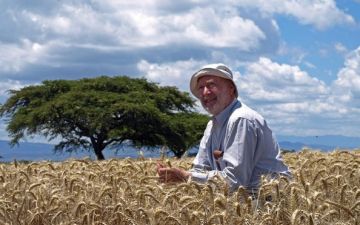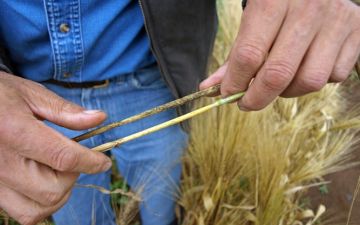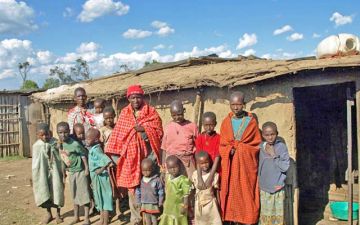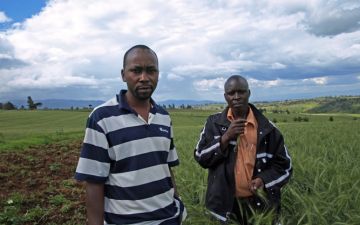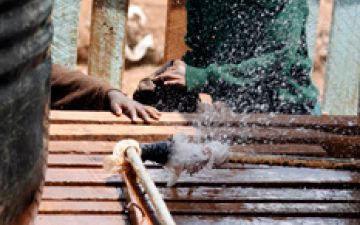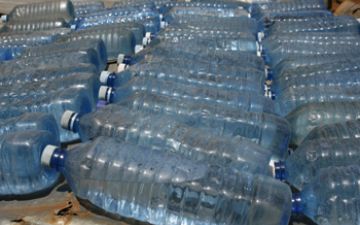Kenya
Disease Destroys Crops on Small Farms; Profits on Large Farms
Kenyan farmers who can not afford pesticides watched wheat whither in the fields as a new strain of stem rust drained the plants of nutrients. Now families who counted on the wheat for a living are begging friends for loans and selling the last of their hens to buy beans, corn and other bare essentials. On larger farms, chemicals helped to control the disease which slowly is spreading beyond Kenya. Still, profits and yields dropped dramatically.
University of Minnesota Doctors Battle AIDS in Uganda
Costa Kiggundu had one question for an American visitor to her home in a gritty Kampala slum: "What will happen if you stop sending the drugs?"
It's a life-or-death question for Kiggundu, her son and all of her friends at the clinic where she gets medicine to help her body fight HIV infection, which killed her husband.
Water Wars Portal Featured on Foreign Exchange
The Water Wars portal is highlighted in a special edition of Foreign Exchange devoted entirely to global water issues. Daljit Dhaliwal interviews Pulitzer Center journalist Alex Stonehill and draws on the portal to share video reports and student perspectives. Rose George, author of The Big Necessity also joins the program to discuss the critical issue of sanitation.
"Malaria's toll on Mariam" at MinnPost.com
See Sharon Schmickle's slideshow at MinnPost.com.
Read her related article, "Misery and Death: Minnesota Doctors Fight Malaria in Eastern Africa."
Kenya: Stalking A Wheat Killer
Contamination
My hotel room in Nairobi is a decontamination site right now.
I have come to Africa to cover a virulent new form of the ancient wheat crop scourge called stem rust. It surfaced a few years ago in Kenya and Uganda, spread into Ethiopia, jumped the Red Sea to Yemen, showed up this year in Iran and now threatens the security of the world's second largest crop.
Scientists worldwide are combing wheat varieties for resistance with limited results. Meanwhile, a major worry is that travelers will transport the deadly rust spores outside Kenya which is the hotspot for the disease.
Maasai
Edward Kosen's offer to slaughter a sheep in honor of my visit was a great breakthrough.
All along the road (if you can call that rutted, washboard trail a road) leading to Kosen's farm in western Kenya's highlands, people from Kosen's Maasai tribe had run from my camera. Hapana . . . hapana . . . hapana (no . . . no . . . no) they said in Swahili when I begged for photos.
Violence in Kenya
On top of his losses to wheat stem rust, George Mukindia watched 30 acres of his wheat burn in the flames of Kenya's recent post-election violence.
Mukindia's fields are near Eldoret, where 30 unarmed civilians were slaughtered in a church on New Year's Day.
From Uganda
At open-air farm markets, Mawe Robbins and James Ockira were the only vendors I could find selling whole kernels of wheat.
The markets offered a plentiful display of bounty from Uganda's rich and fertile soil. There were beautiful mounds of bananas, passion fruit, tomatoes, beans and other produce. But, unlike so many other parts of the world, wheat is not a major crop here.
Kibera: Not a Drop to Drink
In Kibera, a massive slum of rusty tin roofs and makeshift homes spreading out from the southwest of the city, the rain is turning the twisting dirt roads and alleyways to thick red mud.
Here in one of largest slums in the world--a flashpoint for violence stemming from Kenya's parliamentary elections in December--the rain is causing open sewers to swell and uncollected garbage to rush in rivers of tattered plastic and human waste through backyards.
Clean Water for Kenya
In Kibera, a slum of Nairobi, Kenya, clean water is too scarce. But a new technology that takes just a plastic bottle and six hours in the sun is helping reduce sickness and diarrhea in the community, and in other developing countries around the world.
